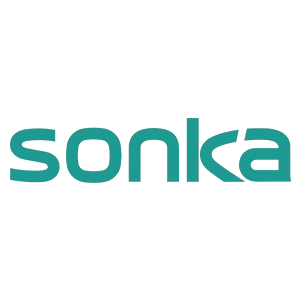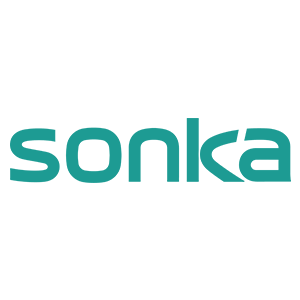Body mass index (BMI) has long been a standard measure for assessing overall health based on weight relative to height. However, it falls short as a comprehensive health indicator. BMI doesn't account for variables like muscle mass, fat content, or bone density. As the medical field advances, we've shifted towards multi-parameter analysis, offering a more detailed picture of an individual's health. New technologies like bioelectrical impedance analysis (BIA), dual-energy X-ray absorptiometry (DEXA), and air displacement plethysmography (ADP) provide insights into fat mass, muscle composition, and even hydration levels. These methods refine our understanding of body composition analysis, elevating it beyond mere weight-to-height ratios and enabling more comprehensive health assessments.
Advancements in technology have revolutionized professional-grade body composition analyzers, making them indispensable tools in clinical settings. These sophisticated devices provide accurate and reliable analysis, which aids healthcare providers in formulating targeted treatment plans. High-precision analyzers, like those manufactured by renowned brands, offer features such as segmental analysis and visceral fat assessment, delivering critical insights. Not only do they measure fat and muscle mass, but they also provide detailed water distribution data and other vital metrics, surpassing typical home-use scales. Such advancements underscore the critical role professional body composition analyzers play in modern healthcare, supporting more accurate health evaluations and aiding in precise patient assessments.
Combining body composition analysis with vital sign monitoring creates a comprehensive health overview, offering an enriched understanding of an individual's physiological state. This integration allows the simultaneous assessment of essential vital signs such as heart rate, blood pressure, and respiratory rate, along with body composition metrics. By aligning these data points, healthcare providers can engage in proactive health management, offering personalized chronic disease interventions and wellness programs. This holistic approach ensures that both body composition analyzers and vital sign monitors work in synergy, facilitating a complete health assessment and promoting better outcomes in patient care through tailored health strategies.
The advent of cloud connectivity has revolutionized the way we track body composition by enabling real-time data synchronization across multiple devices. This technological advancement allows for immediate updates on body composition metrics, which significantly boosts patient engagement and enables rapid decision-making regarding health and fitness goals. For instance, healthcare professionals can now instantly access patient data from different devices, ensuring comprehensive, up-to-date information is always at hand. This synchronization has proven instrumental in improving patient outcomes, as evidenced by case studies and statistics showcasing enhanced effectiveness in health management when real-time tracking is implemented.
Cloud platforms employing AI-powered analysis have opened up new frontiers in understanding body composition data. Through sophisticated algorithms, these platforms can detect trends and predict potential health risks, prompting timely interventions and lifestyle adjustments. For example, AI can identify subtle changes in body composition that might indicate the onset of health issues, allowing preventive measures to be taken before conditions worsen. Reputable cloud-based platforms are at the forefront of this revolution, offering advanced health analytics that facilitate proactive health management and foster improved outcomes for users.
The integration of IoT-enabled vital signs monitors with body composition analysis offers a comprehensive approach to continuous health monitoring. These devices allow for seamless data collection, providing a complete picture of an individual's health status over time. The convenience and compliance offered by these monitors ensure that patients can effortlessly track their health metrics, leading to more consistent use and reliable data. Evidence suggests that continuous monitoring, coupled with appropriate data-driven adjustments, enhances patient health outcomes significantly, empowering individuals to take charge of their health with confidence.
Machine learning plays a pivotal role in analyzing individual health data, allowing for the creation of personalized recommendations and interventions. This advanced technology can deeply analyze body composition analysis metrics and derive insights that cater specifically to an individual's health needs. For example, machine learning can offer personalized guidance for weight management by analyzing diet, exercise, and metabolic data. As a result, these tailored insights lead to improved health outcomes.
Secure cloud storage is crucial for preserving patient privacy and managing long-term health records. It ensures that sensitive health data is stored with high standards of security which aligns with regulations like HIPAA. These regulations mandate strict security measures, such as encryption and access controls, to protect data from unauthorized access. Without adequate cloud storage solutions, there’s a risk of data breaches and loss, emphasizing the need for robust protection.
Cloud-integrated devices enhance healthcare by seamlessly sharing data with electronic health records (EHR) systems, promoting holistic patient care. This interoperability facilitates streamlined workflows and provides healthcare providers with comprehensive patient insights, enhancing decision-making and care planning. Successful integrations, such as those involving body composition analyzers, demonstrate the potential for improved patient outcomes, as exemplified by seamless data exchanges in numerous healthcare facilities.
Incorporating lean mass metrics with vital sign monitoring is crucial in gaining a comprehensive view of an individual's health status. Lean mass is often associated with muscular health and its balance with fat-free mass. By combining this with vital signs like blood pressure, heart rate, and temperature, healthcare professionals can derive deeper insights into a patient’s overall well-being. Techniques such as dual-energy X-ray absorptiometry (DEXA) scans, in conjunction with continuous vital sign monitoring devices, offer robust methodologies to evaluate health accurately. This combined approach particularly benefits populations such as athletes who need precise body composition analysis for performance monitoring and older adults at risk of sarcopenia, helping in tailored healthcare plans.
Leveraging cloud data enables predictive analytics to foresee potential health issues, facilitating early interventions and improved health outcomes. By analyzing vast datasets stored in the cloud, healthcare professionals can identify trends and patterns that may signal upcoming health risks. For example, sudden changes in body composition metrics, when integrated with historical health data, can prompt early screenings and interventions to prevent conditions like cardiovascular diseases. The adoption of cloud technologies in healthcare fosters proactive healthcare models where potential issues are addressed prior to symptomatic manifestation, significantly enhancing patient care and reducing long-term healthcare costs.
Accurate body composition analysis is dependent on adherence to established best practices and procedures. To ensure consistency, it is essential to outline standard operating procedures for analysis, focusing on equipment calibration and maintenance. Regular calibration of body composition analyzers and vital sign monitors is paramount to obtain reliable data, as precision can wane with time and use. Comprehensive training and education for users, such as healthcare providers and fitness professionals, further ensure that measurements taken are precise, enabling accurate health assessments. Such diligence in practice fosters trust in measured outcomes, thus supporting better-informed health decisions and interventions.
As 5G technology begins to reshape various sectors, its transformative impact on healthcare, particularly in remote care, is highly anticipated. The enhanced speed and capacity of 5G networks will enable vital sign monitors to transfer data instantaneously, greatly benefiting real-time patient monitoring. This swift data transmission is crucial for timely interventions, potentially improving patient outcomes during remote consultations and even emergencies. With these capabilities, the adoption of 5G-enabled devices in telehealth is set to increase, promising a new era of efficient, seamless care that reduces the physical barriers traditionally associated with remote healthcare delivery.
Blockchain technology is poised to revolutionize healthcare data security, particularly in sharing sensitive body composition information. By creating permanent, tamper-proof records, blockchain ensures trustworthiness and transparency among healthcare providers and patients. This increased security mitigates the risk of data breaches while facilitating secure data exchange. Pilot projects demonstrate blockchain's potential in body composition analytics, showcasing how immutable records can lead to better data consistency and reliability. As the healthcare industry continues to explore blockchain applications, we expect a new paradigm of secure, efficient data handling and sharing.
Augmented Reality (AR) offers promising advancements in health analytics by enhancing how users interact with and interpret health metrics. AR interfaces can provide a more engaging and intuitive way to visualize complex body composition data, making it accessible to both patients and healthcare providers. This technology allows for more personalized and comprehensible health insights, potentially improving patient engagement and adherence to health regimes. Looking forward, integrating AR into healthcare could unlock innovative applications, such as interactive health assessments and educational tools, further enriching patient and clinician experiences in health management.


Copyright © 2025 by Shenzhen Sonka Medical Technology Co., Limited - Privacy policy